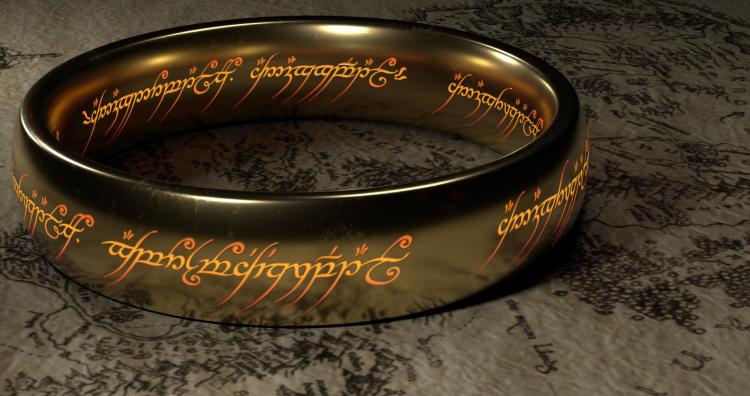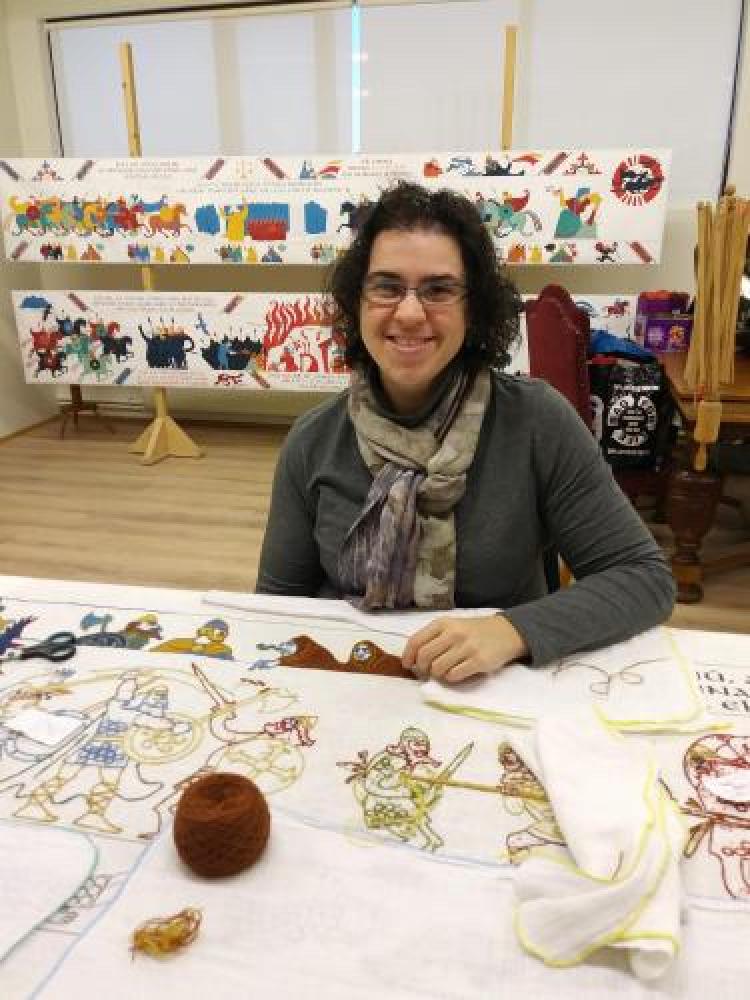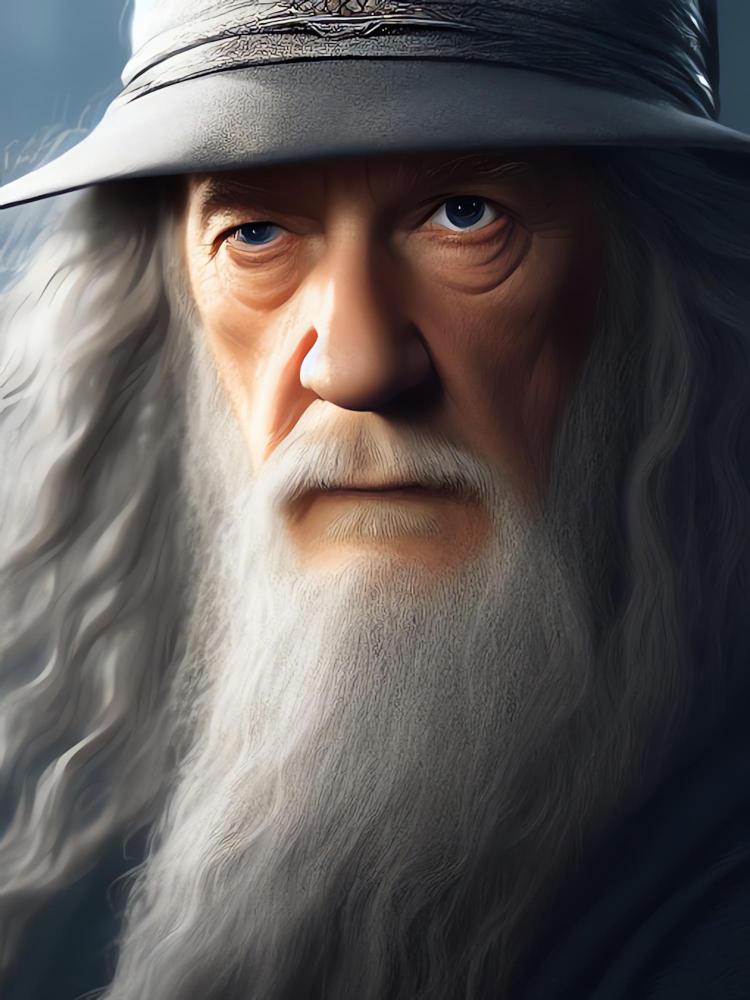J.R.R. Tolkien’s Nordic sources
As a philologist, the author of The Hobbit and the Lord of the Rings trilogy drew extensively from Nordic language and mythology when creating the world of Middle Earth, notes CU Boulder expert who teaches a popular course on the topic

In J.R.R. Tolkien’s books The Hobbit and The Lord of the Rings trilogy, a magical ring gave the wearer the power of invisibility. Some have speculated the ring was a symbol for something in the real world, like the atom bomb, but Tolkien disputed that idea. (photo courtesy of Pixabay)
As the school year at the University of Colorado Boulder begins, one group of students is learning the origins of orcs, elves, goblins, dwarves, wizards and other fantastical creatures inhabiting Middle Earth, as conceived by English author J.R.R. Tolkien, who died 50 years ago this month.
The class, Tolkien’s Nordic Sources and The Lord of the Rings, is a deep dive into all things Middle Earth, with a particular focus on Tolkien’s use of mythology, folklore and epic tales borrowed from Nordic sources, specifically those of Northern Europe during the Middle Ages.
While Tolkien today is remembered and lauded for his works of fiction, that’s not how he primarily viewed himself, says Avedan Raggio, teaching assistant professor for the Nordic Program at CU Boulder, who teaches the class on Tolkien and his Nordic sources.

Avedan Raggio, teaching assistant professor for the Nordic Program at CU Boulder, has taught a class on Tolkien’s Nordic sources since 2015.
“Fans of Middle Earth are very familiar with Tolkien as a fiction author, but he would have first referred to himself as a scholar and a philologist,” she says. As such, he was deeply invested in the study of language, history and literature, with an expertise in Old English and Old Viking texts.
However, while he was steeped in the knowledge of those Nordic languages and mythology, Raggio stresses that Tolkien didn’t copy sagas or epics, but instead drew upon themes, adopting them to fit his own narratives.
“For example, Tolkien didn’t necessarily read Beowulf and say, ‘I like this story; I’m going to re-write it.’ There are very few direct, one-to-one comparisons you can make,” she says. “Instead, it seems more that Tolkien drew upon his decades of experience and immersion in the literature and took themes from the literature. It was less like copy and paste but more borrowed and then adapted.”
Some examples from Tolkien’s works more closely resemble Norse mythology than others, Raggio says, pointing to the similarities between the epic Old English poem Beowulf and Tolkien’s The Hobbit. Both share a story of a thief stealing a cup from a dragon’s treasure hoard and the dragon retaliating by burning down a nearby village.
“That is one of the most direct and clear one-to-one borrowings,” she says, adding it is a fairly rare, direct, corresponding story.
Who is that guy with the long beard, staff and pointy hat?
In other cases, readers of Tolkien’s books may make connections with Nordic myths that don’t actually stand up under scrutiny, such as the idea that the wizard Gandalf the Gray from The Hobbit and The Lord of the Rings trilogy is a representation of the Norse god Odin.
“This is something that I actually have a rant about,” Raggio says with a knowing laugh, having worked to dispel the idea to many a student in the seven years she has been teaching the class. “Rather than rant here, what I’ll say is that the more you learn about Gandalf and Odin, the less similar they seem.
“On the surface, when Odin is described in Norse literature, he’s an old guy with a beard and a staff and a pointy hat and a cloak, and he gives advice. Gandalf, in the opening to The Hobbit, is an old man with a big beard, a staff, a cloak and a pointy hat, and he gives advice.”

Some readers of Tolkien’s work see similarities between Tolkien character Gandalf the Gray and Odin, a revered god in Norse mythology. Although Tolkien borrowed from Norse and Old English mythology for his novels, the connection between Gandalf and Odin is tenuous, according to Avedan Raggio, teaching assistant professor for the Nordic Program at CU Boulder. (Photo courtesy of Pixabay)
However, the two characters vary greatly when it comes to their actions and intentions, according to Raggio.
“The advice Odin gives is usually bad advice,” she says. “The advice Odin gives to human heroes is designed to make them achieve glory—and then die. That’s because Odin is preoccupied with evading his fate at the apocalypse, at Ragnarök, where it’s prophesied that he is going to die. And Odin doesn’t want to die, so he thinks if he gets the best human warriors and heroes to die in their prime, ‘They will come to Valhalla, and then they can fight on my side in Ragnarök, so maybe I won’t die.’
“In short, Odin’s a bit of a jerk.”
In contrast to Odin, the legend that Tolkien created for Gandalf was one in which the wizard was a “Maiar,” a sort of lesser angel, whose mission was to assist the people of Middle Earth, according to Raggio. And while Gandalf—like Odin—engaged in trickery on occasion, no one was hurt by Gandalf’s dishonesty and his actions were done with the intent of saving lives, she says, “whereas Odin doesn’t care about collateral damage.”
“So, I think the explanation for the Gandalf-Odin similarities is not that Odin inspired Gandalf, but instead that Odin and Gandalf share the same archetype—an old, wise wizard, bearded dude who dispenses information,” she adds. “That archetype is everywhere.”
Raggio says other creatures inhabiting Middle Earth were Tolkien’s own creation—most notably Hobbits, the fictional race of diminutive halflings with leathery soles and furry feet tops, big appetites and great courage.
Notably, Tolkien had a particular people in mind when he gave literary life to the Hobbits.
“You could make an argument that there are some similar figures (in Nordic tradition), but the Hobbits are a native invention of Tolkien,” she says. “He saw the Hobbits as the personification of rustic English culture. … He said of himself, ‘I am a Hobbit in all but size.’”
Meanwhile, the Hobbits’ home, The Shire, represented the best aspects of pastoral England from his own childhood memories, she adds.
Some limitations on comparisons with Middle Earth
In comparing Tolkien’s created world of Middle Earth with Nordic myths, there also is a natural inclination to compare his works of fiction with things in the real world, Raggio acknowledges. For example, some Tolkien readers have come to view The Lord of the Rings story as an allegory for the clash of Axis and Allied forces in World War II, or as the battle between good and evil in the Bible, thus reflecting Tolkien’s Catholic faith.
For his part, Tolkien famously disliked allegory, which he believed reduced a work to being derivative, according to Raggio.
“When he saw people saying a work was allegorical, he also saw them reducing it,” she says. “Tolkien wanted his work … to be appreciated as art, as something in and of itself. And many times, in his experience, if someone says, ‘This is an allegory about Jesus,’ or ‘The ring is clearly an atomic bomb’—once someone declares that, they think no more about it. I think Tolkien had too many bad experiences about people reducing his work to mere allegory.”
Still, that’s not to say Tolkien did not draw from a variety of sources from around him, including his faith, to create a rich and complex world, she adds.
Tolkien also was not a fan of source criticism, which is a way of evaluating the way an author or work interacts with their source material.
“That’s because his experience with source criticism was people doing it badly—ripping apart something to find out where it was from and ignoring that it had value as a piece of art,” Raggio says.
In her class on Tolkien, students start by learning about source criticism, but she says they practice doing it in a way that isn’t destructive. Once students have learned relevant parts of Old Norse literature and Old English literature, they can learn to establish connections between those sources and The Hobbit and The Lord of the Rings books, which they read as part of the course.
As one might imagine, Raggio says her Tolkien class is popular with die-hard fans of the English writer’s famous fantasy novels. At the same time, she says the class draws from a much broader student demographic, including student athletes, business majors and students pursuing the sciences, to name a few.
This year, Raggio’s Tolkien course is being taught via Zoom, and in the first semester more than 80 students were enrolled. In past years, the class was offered in two in-person courses per semester that were open to 30 students each, and there was always a lengthy waiting list, according to Raggio.
“I have taught this class as an 8 a.m. course, and I remember many students saying, ‘Only Tolkien could get me out of bed at this time,” she says with a laugh.
Raggio says that whether students who take her class are ardent fans of Tolkien’s works or more casual readers, her goals for them are the same.
“I want them to leave the class liking Tolkien as much, if not more, than they did coming into it,” she says. “We’ve all had experiences where we liked a piece of media, and then by analyzing it and over-analyzing it, we can’t like it any more. There is a right way to do this. So, my goal is that, by thinking about source information, they leave this class with more inspiration, liking Tolkien even better and having more to appreciate.”
Did you enjoy this article? Subscribe to our newsletter. Passionate about nordic studies? Show your support.

